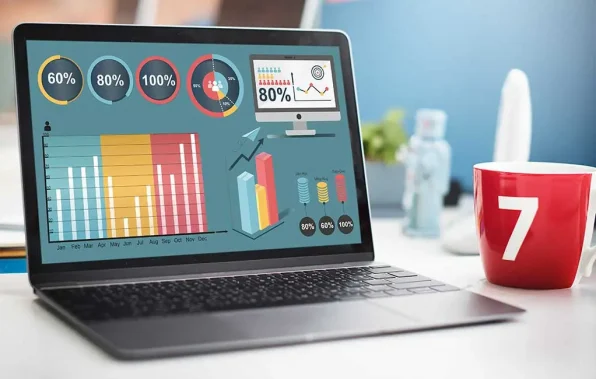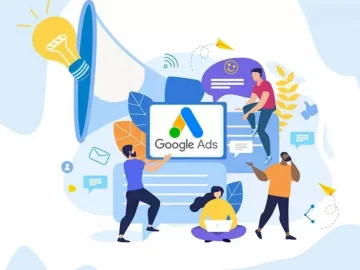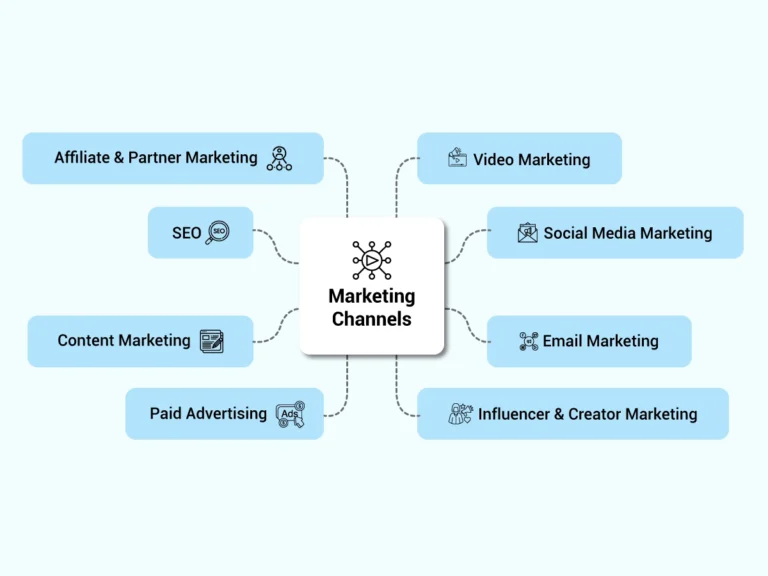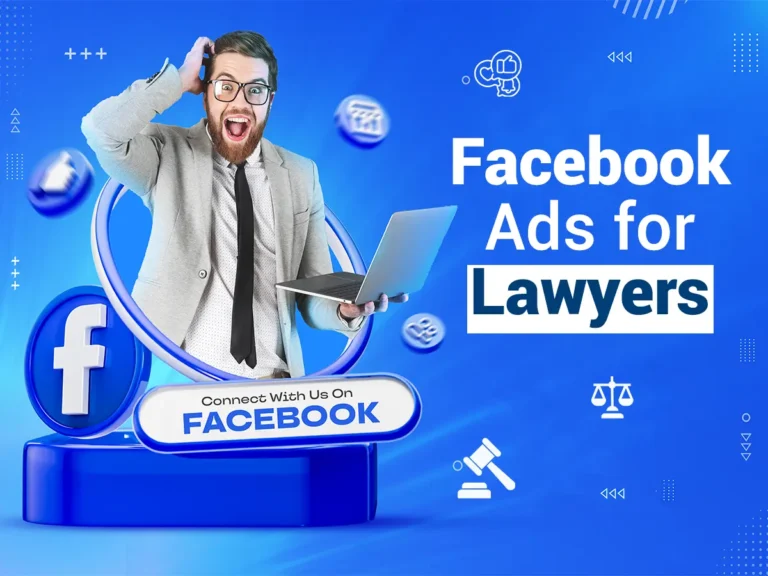Curious about the price tag attached to Google Ads? To be more precise, how much does Google ads cost?
It’s a common inquiry, especially for those dipping their toes into the world of paid search.
Of course, you want to know if it fits within your budget.
Well, here’s the scoop: yes, you can afford it!
Well, hold on tight, because there’s no simple, one-size-fits-all response. It’s one of those “it depends” situations—clear as mud, right?
But, don’t worry just yet. While there’s no magic formula, we have got some handy benchmarks up our sleeves to point you in the right direction. So you can confidently map out your budget.
Ready to roll in? Let’s get started!
How Do Google Ads Work?
Google Ads are like your online marketing sidekick, helping businesses get noticed by bidding on keywords relevant to their products or services.
That is, when someone searches for those keywords, there’s a virtual auction where businesses compete for ad space. The winner’s ad gets shown to the searcher, and they only pay when someone clicks on their ad.
Plus, these ads can also appear on websites that partner with Google. It’s all about being in the right place with the right message when someone needs it most.

So, What is the Average Google Ads Cost?
Google Ads costs can vary wildly depending on a bunch of factors, kind of like trying to predict the weather in April. Here’s a ballpark figure to work with:
On average, small and medium-sized businesses tend to spend anywhere from $9,000 to $10,000 per month on Google Ads. That might sound like a hefty chunk of change, but you can think of it as an investment in your online presence. Plus, remember, you are in control of your budget, so you can dial it up or down as needed.
But wait, there’s more!
We can’t forget about the cost per click (CPC). This is like the microtransaction of the Google Ads world – every time someone clicks on your ad, cha-ching!
The average CPC across all industries hovers around $2 to $3. Of course, some keywords might cost you a pretty penny more, while others could be a steal of a deal.
Now, before you start panicking about breaking the bank, take a deep breath.
Google Ads can be surprisingly cost-effective, especially when you consider the potential return on investment. Plus, with all the targeting options and analytics at your fingertips, you can make sure every penny is working its hardest for you.
Key Factors that Impact Google Ads’ Price
Google Ads operates on a dynamic, ever-changing ecosystem where several factors come into play. Here are the key ones:
1. Industry
Suppose, you are in a crowded room, vying for attention among other businesses. That’s basically what happens in the digital marketplace.
Depending on your industry, the competition for keywords and ad space can vary drastically. For instance, if you are in the insurance or legal industry, you might need to shell out a bit more cash to stand out compared to, say, selling cute cat socks.
2. Ad Type & Campaign Strategy
It’s all about the game plan, my friend!
The type of ad you are running and your overall campaign strategy can greatly influence how much you will be shelling out. Are you going for those flashy display ads that pop up on websites? Or maybe you are more into the subtle charm of search ads that show up when someone Googles a related keyword? Each strategy comes with its own price tag.
3. Bidding Strategy
The heartbeat of Google Ads!
So, how much are you willing to throw into the ring every time someone clicks on your ad? Your bidding strategy can have a huge impact on cost.
For example, do you want to go all-in with aggressive bidding to secure those top spots, or maybe play it cool and opt for a more conservative approach?
But here’s the kicker: you also need to consider quality score and relevance to ensure you are not just throwing money into the digital world. Therefore, choose wisely, my friend.

4. Schedule
Time is money, especially in the world of Google Ads. When and how often your ads are running can affect the overall cost. Such as, do you plan on targeting peak hours when everyone’s glued to their screens, or maybe play it safe with off-peak times?
It’s all about finding that sweet spot where you get the most bang for your buck.
5. Device Targeting
These days, everyone spends most of their hours on their smartphones – and Google knows it very well.
Targeting specific devices can impact your ad costs. For example, are you focusing solely on mobile users, or are you spreading the love across desktops and tablets too? Keep in mind that each device comes with its own set of costs and considerations.
6. Trends
What’s hot today might be old news tomorrow – and that can affect your ad costs. Hence, always keep your finger on the pulse of what’s trending in your industry and adjust your strategy accordingly.
Riding the wave of a viral trend can boost your visibility – but it might also bump up your ad costs.
7. Campaign Management Fees
Last but not least, let’s talk about behind the scenes making it all happen: the campaign managers. Yes, their expertise comes at a price.
So, whether you are hiring an in-house team or outsourcing to a digital marketing agency, there are costs associated with managing your campaigns.
These fees can greatly vary depending on the level of expertise and services you require, so be prepared to budget for those management fees.
Additional Costs Involved in Google Ads
Let’s talk about the extra expenses that can sneak up on you when diving into the world of Google Ads. You can think of them as the little surprise guests at your advertising party – they might not be on the initial guest list, but they show up anyway. Such as the following:
Hiring an Agency
First up, we have got hiring an agency. Now, don’t get it wrong, agencies can be absolute lifesavers. They bring expertise, experience, and a whole lot of know-how to the table.
But guess what? They don’t come for free. And you must keep a budget for their services if you want to tap into their magic.
Tracking and Optimization Tools
Sure, Google Ads gives you some basic tools to work with, but if you are serious about optimizing your campaigns like a pro, you might want to invest in some extra firepower. And yes, you guessed it – those tracking and optimization tools often come with a price tag attached.
Ad Copy and Visuals
Next on the list: ad copy and visuals. Because let’s face it, a bland, uninspiring ad isn’t going to get you very far in the cutthroat world of online advertising.
Crafting compelling copy and eye-catching visuals takes time, effort, and sometimes even hiring a professional copywriter or designer to get it just right. Ultimately, meaning more costs.
A/B Testing
A/B testing – the secret sauce of successful advertising campaigns. It’s all about experimenting with different ad variations to see what resonates best with your audience.
But here’s the thing: running those tests costs money. Meaning, each variation you test means more ad spend, so you have to factor that into your budget.

Expanding the Network
Last but not least, expanding your network. Sure, Google’s Display Network can reach millions of websites, but if you want to cast an even wider net, you might need to explore other advertising platforms or channels. Eventually referring to shelling out more cash.
Google Ads vs. Other Platforms: Is It Worth the Investment?
Well, let’s start with the big kahuna of search engines – Google.
When people need answers, where do they turn? That’s right, Google. It’s like the modern-day oracle, dishing out solutions to our everyday problems.
And guess what? Your potential customers are there, right in the midst of their search journey.
With Google Ads, you are not just reaching people; you are reaching people actively looking for what you offer. Talk about hitting the jackpot!
But hold your horses, because there’s a whole world of platforms out there clamoring for attention too. We are talking social media giants like Facebook, Instagram, Twitter – the cool kids on the block, if you will.
Each platform has its unique vibe and audience, offering you a chance to get creative with your advertising strategies. Want to dazzle with eye-catching visuals on Instagram? Done.
How about sparking conversations with your audience on Twitter? Easy peasy.
Now, you might be thinking, “But which one is worth my hard-earned cash?” Well, my friend, the answer isn’t one-size-fits-all. It’s like trying to pick your favorite flavor of ice cream – it all depends on your tastes and preferences.
That is, Google Ads is like the reliable vanilla – classic, dependable, and always a crowd-pleaser. In other words, it’s the go-to choice when you want to capture those high-intent customers actively searching for what you offer. Plus, with its robust targeting options and real-time performance tracking, you can tweak your campaigns on the fly for desired outcomes.
On the flip side, social media platforms are like the Neapolitan – offering a little something for everyone. With their vast user bases and sophisticated targeting tools, you can zero in on your ideal audience with laser precision. Plus, they are all about engagement, giving you the chance to build relationships and foster brand loyalty in ways you never thought possible.
How to Optimize Your Google Ads Campaign?
Optimizing your Google Ads campaign is like fine-tuning a musical instrument; it takes a bit of expertise, creativity, and a good ear for what resonates with your audience.
So, let’s dive into some awesome tips to help you rock out your Google Ads campaign:
Create a Daily Budget
First up, let’s talk money. Setting a daily budget is like giving yourself guardrails on a wild road trip. It keeps your spending in check and ensures you won’t suddenly find yourself penniless by noon.
What to do?
Start with a budget that won’t break the bank but still gives your ads room to roam. You can always adjust it later as you get a feel for how your campaign is performing.
Increase Your Quality Score
Quality Score is like your campaign’s popularity score in the eyes of Google. The higher your score, the better your ads perform, and the less you pay per click. It’s a win-win!
To boost your Quality Score, focus on creating relevant ad copy, using targeted keywords, and improving your landing page experience.
Google loves relevance, so give it what it wants and watch your Quality Score soar.
Use Negative Keywords
Negative keywords are like the bouncers at your campaign’s VIP party. They help keep out the riff-raff and ensure your ads are only shown to the most relevant audience.
Besides, by adding negative keywords, you prevent your ads from appearing in searches that aren’t likely to convert, saving you money and improving your campaign’s overall performance. Much like serving the right drinks to the right crowd – classy and effective.
Use Ad Extensions
Ad extensions are like the cherry on top of your campaign sundae. They give your ads extra flair and functionality by providing additional information and enticing calls to action.
Whether it’s site links, callouts, or location extensions, ad extensions help your ads stand out from the competition and increase your chances of getting clicks.
Test Different Days and Times to Run Ads
Just like a chef experimenting with different spices, you will want to test different days and times to see when your ads perform best.
Maybe your target audience is more active on weekdays during lunch breaks, or perhaps they are night owls who browse who do their shopping after dark. Whatever the case, experimenting with different scheduling options can help you optimize your campaign for maximum impact.
Use Geotargeting
Geotargeting is like having a GPS for your ads. It allows you to target specific geographic locations, ensuring your ads are seen by the right people in the right place.
Whether you are targeting a specific city, region, or even a radius around your business location, geotargeting helps you reach the audience most likely to convert. Much like rolling out the red carpet for your ideal customers and inviting them to engage with your brand.

Is It Worth Paying for Google Ads?
Alright, picture this: Google Ads is like setting up shop on the busiest street in town, where potential customers are strolling by every minute.
But is it worth paying for? Short answer: Yes!
Why? Because Google Ads puts your business right in front of people actively searching for what you offer. It’s targeted, it’s precise, and it’s like having a supercharged megaphone that hones in on your ideal customers.
Sure, there’s a cost involved, but think of it as a strategic investment.
As instead of throwing your message out into the void, you will be targeting specific keywords and demographics – reaching the very people who are most likely to be interested in what you have to offer.
And the best part? You get bombarded with valuable data to see exactly how your ads are performing. Much like having a crystal ball that shows you what’s working and what’s not, so you can tweak and optimize your campaigns for desired impact.
Wrapping Up
Congratulations, you have just completed your crash course in Google Ads budgeting!
Armed with the knowledge of how much does Google Ads cost, you are now ready to take your advertising efforts to new heights.
So, the next time you are pondering your advertising budget, make sure to ask yourself: How can I make every dollar count?
After all, successful budgeting isn’t just about throwing money at the platform; it’s about strategic allocation and constant optimization.
So, whether you are a seasoned advertiser or just dipping your toes into the digital marketing waters, use these insights to pave your path to success on Google Ads.
And don’t forget to keep asking questions and experimenting to find what works best for your unique business needs.
Happy Advertising!
FAQs
It depends on various factors like your industry, target audience, and keywords. But, with strategic planning and optimization, you can make every penny count.
Trim your Google Ads expenses by refining targeting, improving ad relevance, and optimizing keywords. As in the end of the day, it’s all about maximizing efficiency.
You don’t need a big budget to start with Google Ads. With careful planning and optimization, even a modest budget of $1,000 to $2,500 per month can yield significant results.
Absolutely! When executed effectively, Google Ads can drive valuable leads, boost conversions, and maximize your ROI. Hence, keep refining your approach to stay ahead in the game.









